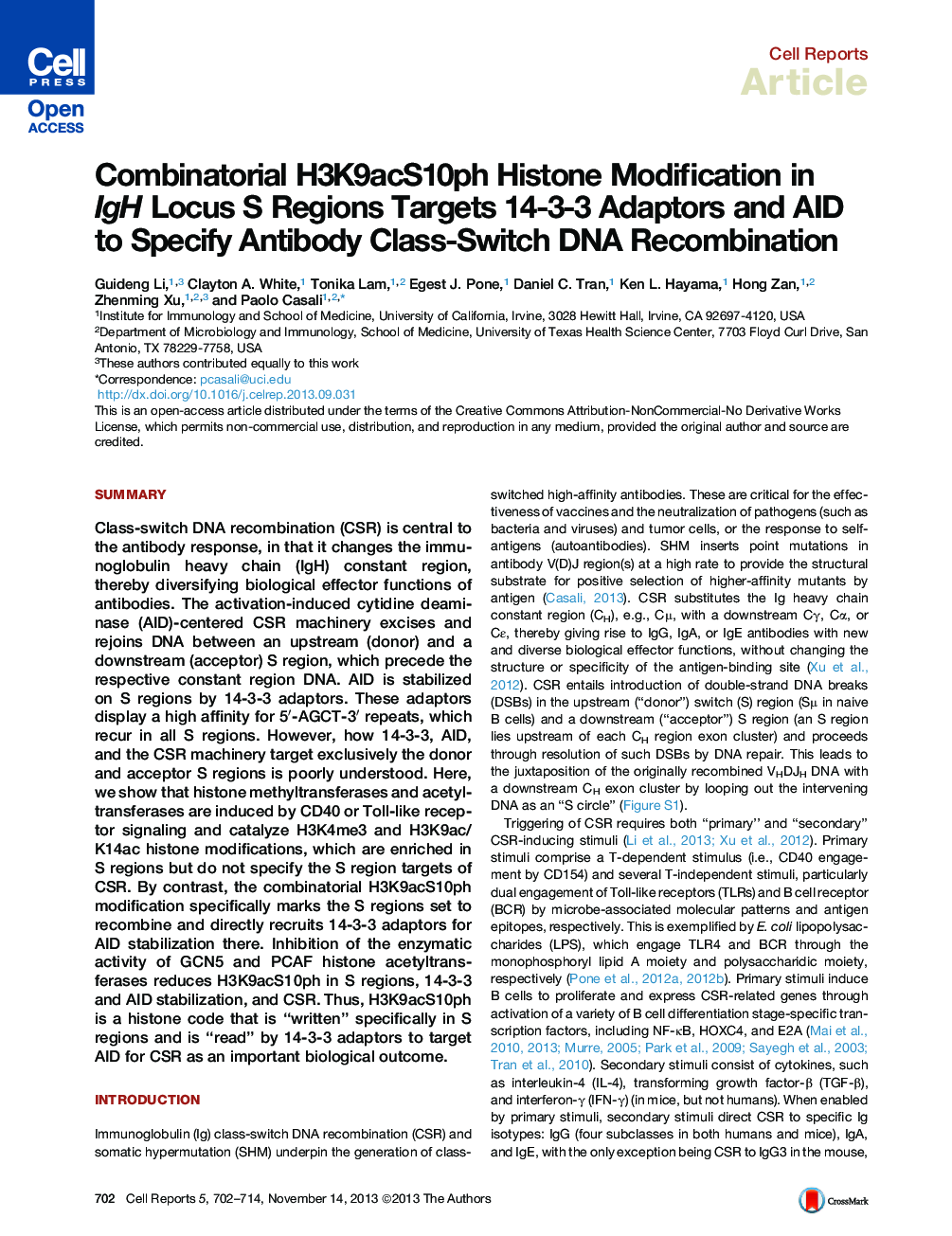| Article ID | Journal | Published Year | Pages | File Type |
|---|---|---|---|---|
| 2041552 | Cell Reports | 2013 | 13 Pages |
•Primary, but not secondary, CSR-inducing stimuli induce histone-modifying enzymes•Primary and secondary stimuli synergize to induce IgH S region histone modifications•H3K9acS10ph marks exclusively the donor and cytokine-specified acceptor S regions•H3K9acS10ph targets 14-3-3 and then AID to the donor and acceptor S regions for CSR
SummaryClass-switch DNA recombination (CSR) is central to the antibody response, in that it changes the immunoglobulin heavy chain (IgH) constant region, thereby diversifying biological effector functions of antibodies. The activation-induced cytidine deaminase (AID)-centered CSR machinery excises and rejoins DNA between an upstream (donor) and a downstream (acceptor) S region, which precede the respective constant region DNA. AID is stabilized on S regions by 14-3-3 adaptors. These adaptors display a high affinity for 5′-AGCT-3′ repeats, which recur in all S regions. However, how 14-3-3, AID, and the CSR machinery target exclusively the donor and acceptor S regions is poorly understood. Here, we show that histone methyltransferases and acetyltransferases are induced by CD40 or Toll-like receptor signaling and catalyze H3K4me3 and H3K9ac/K14ac histone modifications, which are enriched in S regions but do not specify the S region targets of CSR. By contrast, the combinatorial H3K9acS10ph modification specifically marks the S regions set to recombine and directly recruits 14-3-3 adaptors for AID stabilization there. Inhibition of the enzymatic activity of GCN5 and PCAF histone acetyltransferases reduces H3K9acS10ph in S regions, 14-3-3 and AID stabilization, and CSR. Thus, H3K9acS10ph is a histone code that is “written” specifically in S regions and is “read” by 14-3-3 adaptors to target AID for CSR as an important biological outcome.
Graphical AbstractFigure optionsDownload full-size imageDownload as PowerPoint slide
